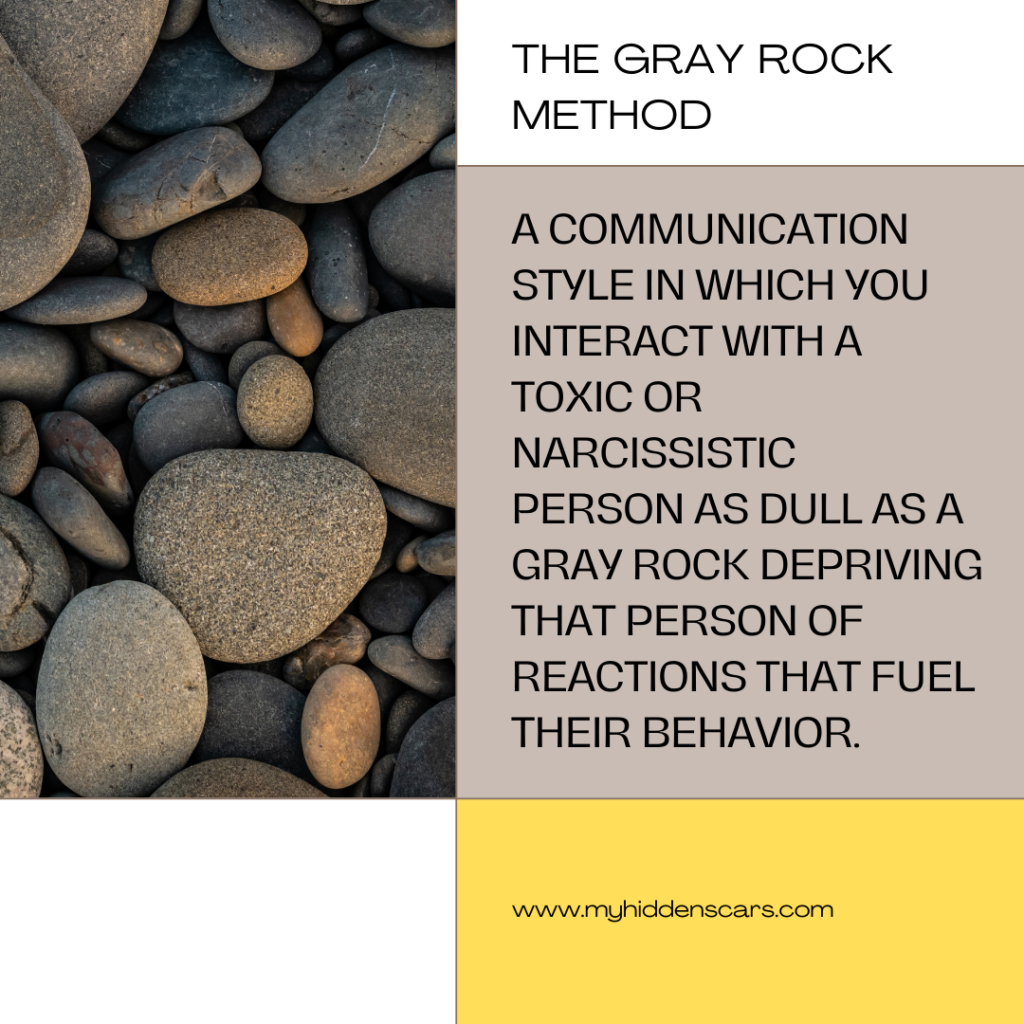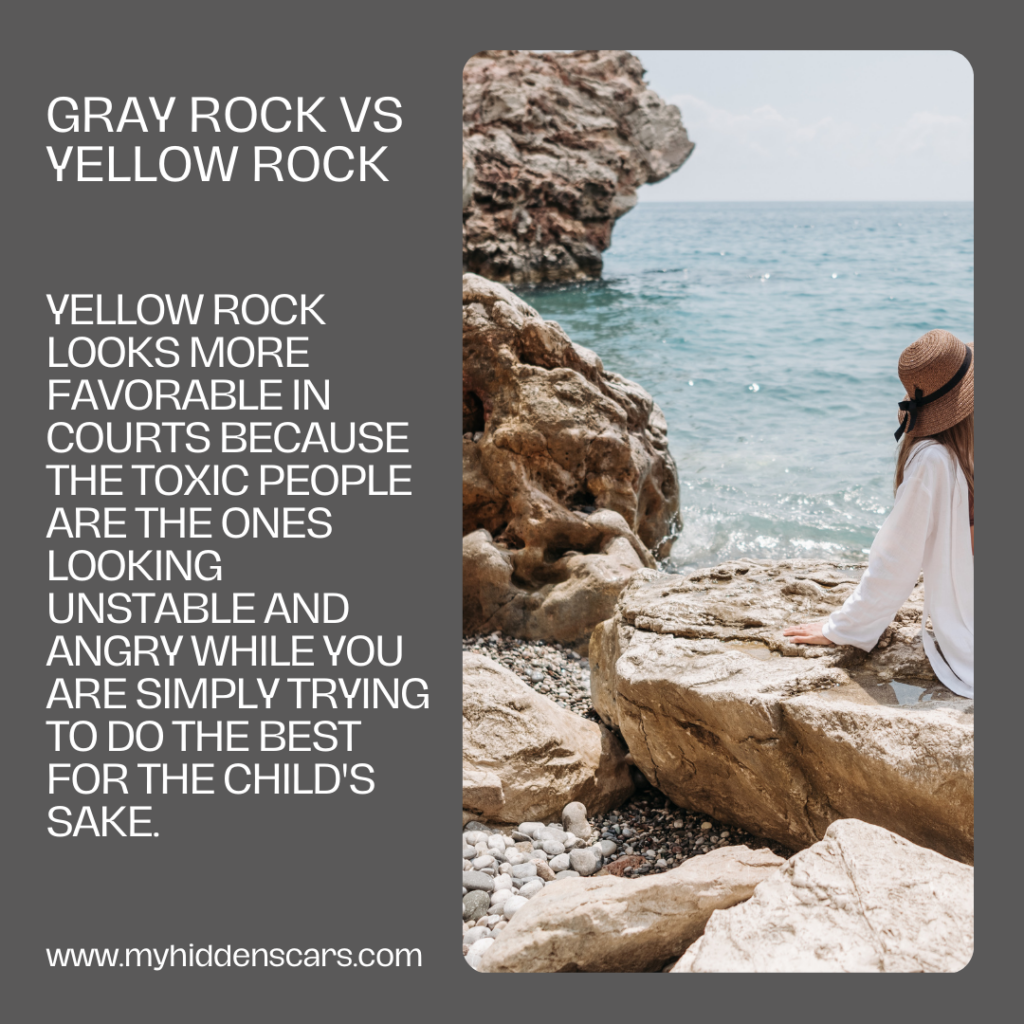When I first left my ex-husband, I found myself struggling with how to communicate with him. I had spent years doing what he told me to do, doing it his way and not having a voice in our marriage. When I left, I felt empowered to speak up, share my side, and convince him that what I wanted and did was right. I spent hours and days responding to his emails, complete with reasons and facts. I knew he would see it my way if I could just put the right words into the email.
After a while, I realized I had no idea how to communicate with him or how to deal with our high-conflict situation. Trying to communicate with someone who had no intention of caring or understanding what I was sharing became really nearly impossible. Over time, I discovered that less was best with him; of course, I had no idea there were different communication styles then. As time went on, I learned about each style, but not until I read about them and tried to understand them did I start using them. Of course, each had its own positives and negatives.
Divorce is an emotionally charged process that can sometimes escalate into high-conflict situations. Effective communication strategies are the foundation of any relationship.
However, effective communication in a high-conflict relationship requires communication methods you may have yet to use before. Communication methods such as “Gray Rock” and “Yellow Rock” have surfaced as lifelines for those like myself who are forced to communicate with abusive exes. Both communication methods help to lessen the emotional turmoil involved in high-conflict relationships, but they do so in very different ways.
Let’s spend the next few minutes exploring Gray Rock and Yellow Rock communication methods, how they are perceived by your former partner and the family courts, and which approach might be more favorable in such sensitive situations.
What is “Gray Rock” Communication?
The “Gray Rock” method is based on becoming as emotionally unresponsive and unengaging as possible, much like a grey rock is dull. This involves maintaining calm, offering minimal responses, and steering clear of emotionally charged conversations. The goal is to make yourself uninteresting and discourage the other party from engaging in conflict.

Why Does Gray Rock Communication Method Work?
“Gray Rock” removes the emotional ‘fuel’ that high-conflict individuals often use to ignite arguments. Responding neutrally to prodding or shifting the conversation to boring topics can reduce potential conflicts. This approach is like denying oxygen to a fire; without emotional engagement, provoking behaviors lose their impact, leading to less conflict.
Great Rock Communication Challenges in Family Court
While using the “Gray Rock” method effectively avoids conflict, it can face scrutiny in family court settings, particularly concerning co-parenting. Judges or mediators sometimes view this emotional disengagement as a lack of willingness to communicate or cooperate. This could be problematic in custody decisions where effective co-parenting is so important.
What is “Yellow Rock” Communication?
Building upon the foundation built by the “Gray Rock” method, “Yellow Rock” introduces a layer of politeness and minimal encouragement without strong emotion. This strategy, which Tina Swithin coined, involves being cordially distant, allowing for a little bit of engagement without inviting further conflict. It represents a balanced approach, especially in the eyes of family courts, which emphasize the importance of co-parenting.

“Yellow Rock” requires a subtle approach, communicating with politeness and minimal encouragement. When using the “Yellow Rock” method, you use a friendly yet distant speech to navigate necessary interactions without escalating tensions.
Examples and Effectiveness:
Scenario 1: Discussing Parenting Time – When an ex-spouse proposes a change to the parenting schedule, instead of shutting down the conversation, a good response would be to respond politely and considerately, “I understand your request. Let’s discuss this with our parenting coordinator to find what’s best for the children.”, maintaining civility without deepening conflict.
Scenario 2: Dealing with Challenges – Facing a message filled with accusations, a response might be, “I see you’re upset. It’s important for us to focus on what’s best for the kids. How can we move forward together?” This response acknowledges the emotion without engaging in the conflict, steering the conversation toward constructive resolution.
Perspective of Family Courts on Communication Strategies
Family courts prioritize a respectful and collaborative environment between parents. This becomes even more important when children’s well-being is at stake. Courts are concerned with protecting children from the negative repercussions of parental conflicts on their emotional development and the post-divorce parental relationship.
“Gray Rock” communication tries to minimize direct conflict and can unintentionally show the court that a parent is reluctant to have open and productive communication. This raises concerns because the family courts focus on promoting an atmosphere where collaborative parenting thrives.
The “Yellow Rock” approach encourages minimal but polite interaction and aligns more closely with the courts’ goals. It demonstrates a proactive effort to maintain a civil and cooperative appearance. This approach shows the court that despite the challenges, there’s an attempt to engage in communication that prioritizes the child’s best interests.
Family courts encourage positive communication, emphasizing the parent’s commitment to their child’s well-being. The “Gray Rock” method might be seen as a withdrawal from communication, making it hard for parents to make joint decisions. “Yellow Rock” shows the court a parent’s attempt to balance personal emotional health with their child-rearing responsibilities. Family courts highly regard this balance, as it demonstrates a willingness to foster a stable and consistent life for the child during the chaos of divorce.
The courts like it when parents have thoughtful and respectful interactions that minimize the child’s exposure to conflict. The “Yellow Rock” strategy demonstrates a parent’s attempt to protect the child from needless stress while making sure that necessary communications remain productive and respectful.

Incorporating Family Court Perspectives into Our Communication Strategy
Understanding how family courts look at different communication strategies reinforces the importance of choosing an approach that minimizes conflict and actively contributes to a positive co-parenting dynamic. For parents navigating high-conflict divorces, this understanding emphasizes the need to balance personal well-being to foster a nurturing environment for their children.
By including insights from family courts in this blog post, my goal is to present a well-rounded perspective on how “Gray Rock” and “Yellow Rock” strategies can be tailored to address the needs of parents alongside the family court’s expectations. This approach ensures that the communication strategy chosen not only serves the child’s best interests but also aligns with the court’s priority for respectful and joint parenting after a divorce.
Conclusion
As someone who has personally navigated the complexities of high-conflict divorce, I’ve experienced firsthand the power of both “Gray Rock” and “Yellow Rock” communication strategies. Family courts indeed favor approaches that embody cooperation and respect, elements vital for co-parenting success. Through my journey, I’ve learned the delicate art of balancing these strategies to effectively move through legal processes, always with the child’s best interests at heart.
If you are used to contentious, argumentative, or highly toxic communication in your relationship, “Gray Rock” and “Yellow Rock” communication methods may seem a bit foreign at first. But after a little exercise, they will save you hours of stress and frustration.
Would you like help learning how to employ these methods and aligning with the court’s priorities while safeguarding the mental health of your children? Working together, I can guide you in mastering “Gray Rock” and “Yellow Rock” techniques, helping you navigate your divorce and ensuring outcomes that benefit you and, most importantly, your child.


